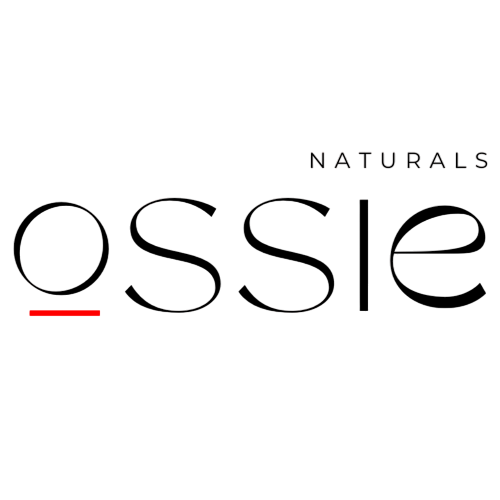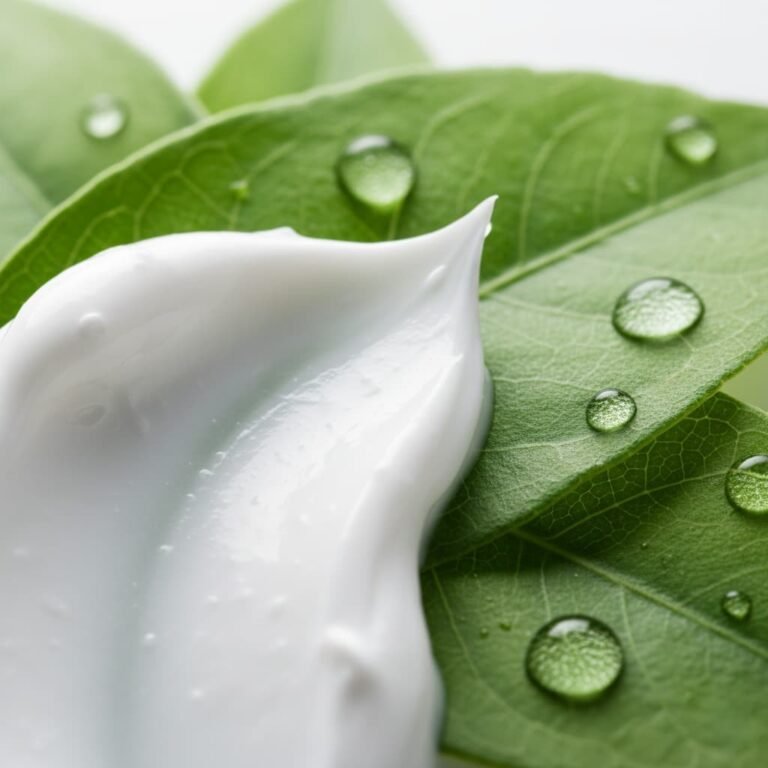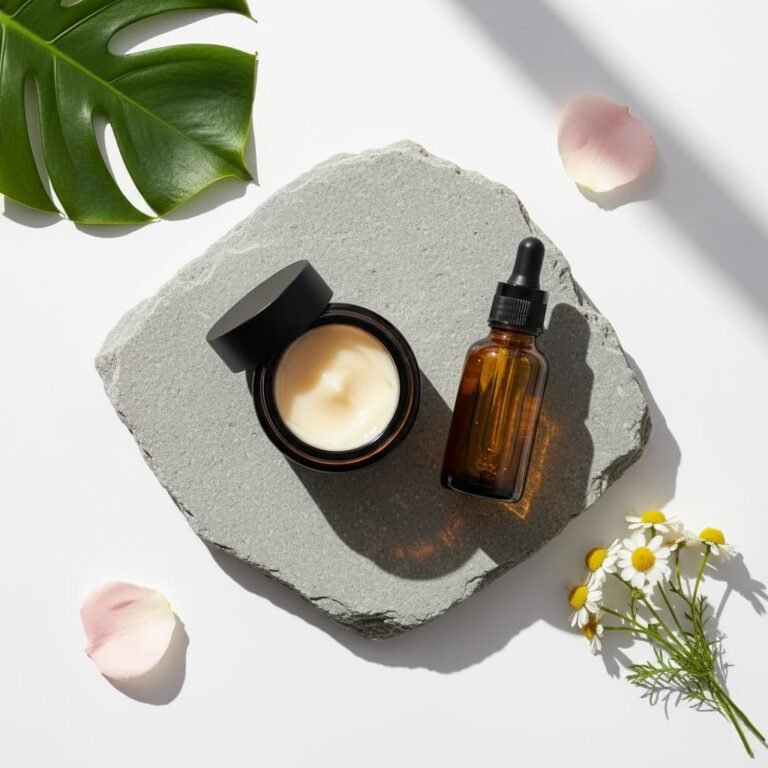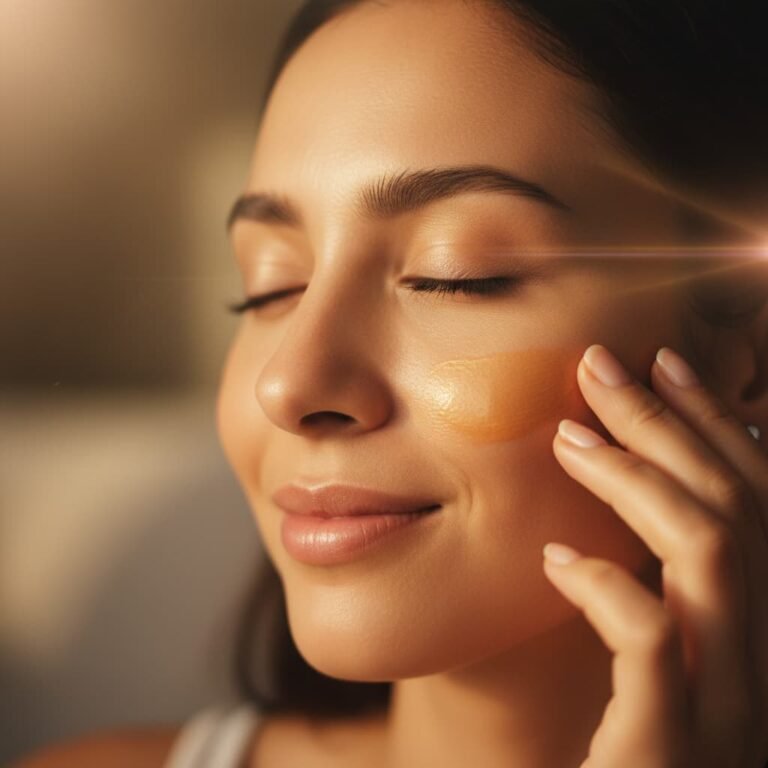Glycation and Your Skin: The Hidden Sugar Damage Accelerating Ageing (And How to Stop It)
Skin glycation represents one of the most insidious yet preventable causes of premature ageing, transforming your skin into wrinkles, sagging, and dullness
Glycation and Your Skin
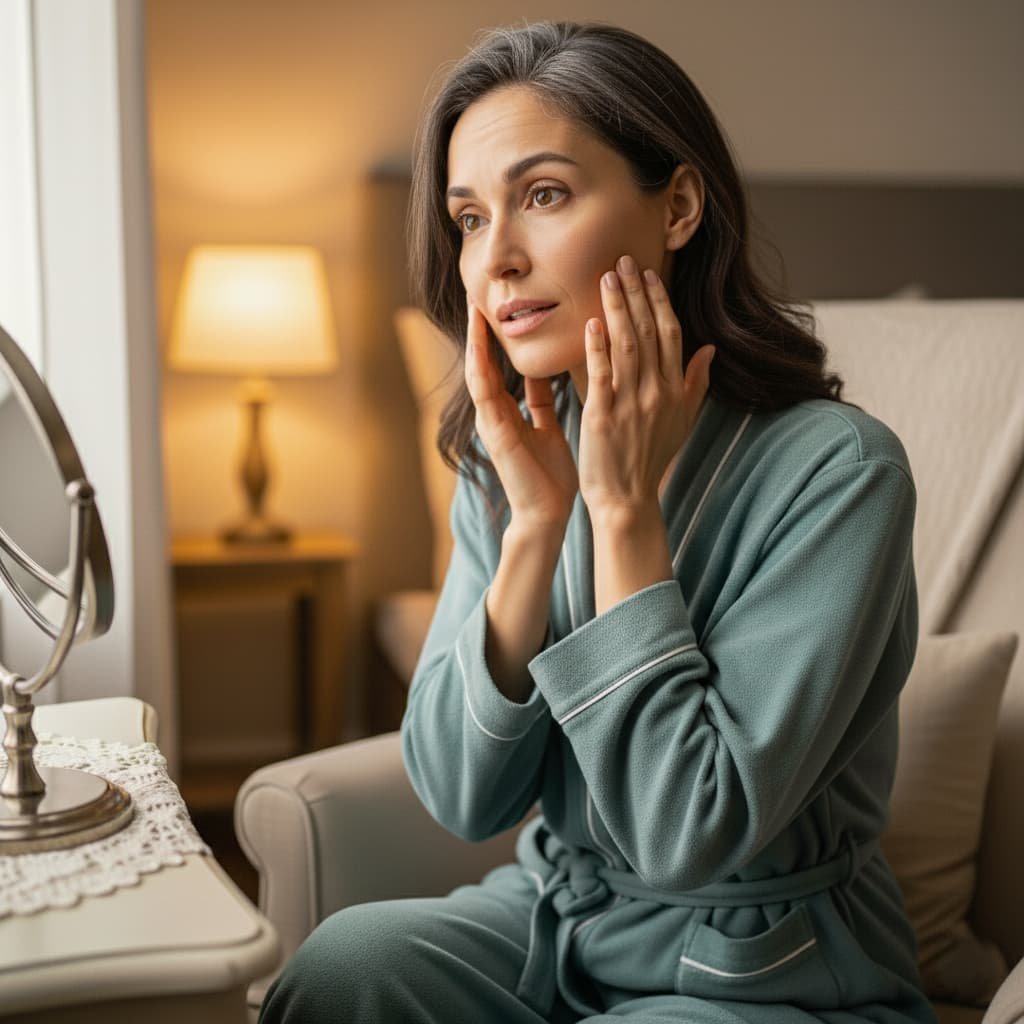
Skin glycation represents one of the most insidious yet preventable causes of premature ageing, operating silently at the cellular level to transform your skin’s structural proteins into brittle, discoloured compounds that manifest as wrinkles, sagging, and dullness. Unlike external ageing factors such as sun exposure or pollution that create visible damage over time, glycation occurs internally through a complex biochemical process that fundamentally alters your skin’s architecture from within, creating irreversible changes that compound over decades.
Understanding glycation empowers you to address this hidden ageing accelerator through targeted lifestyle modifications and skincare strategies that can significantly slow its progression whilst supporting your skin’s natural repair mechanisms. This knowledge transforms your approach to anti-ageing from reactive treatments that address visible damage to proactive prevention that preserves your skin’s structural integrity at the molecular level.
The glycation process affects everyone regardless of skin type, tone, or genetic predisposition, but its rate and severity can be dramatically influenced by dietary choices, lifestyle factors, and skincare practices. This universality makes glycation education crucial for anyone seeking to maintain youthful skin appearance and function throughout the ageing process, whilst the controllable nature of many glycation triggers provides hope for meaningful intervention and prevention.
Understanding Glycation: The Molecular Ageing Process
The Biochemistry of Skin Glycation
Glycation occurs when excess glucose molecules in your bloodstream bind irreversibly to amino acids in essential skin proteins, particularly collagen and elastin, through a complex multi-stage chemical reaction known as the Maillard reaction. This process, which also occurs in food preparation when proteins and sugars brown under heat, creates irreversible cross-links between protein molecules that fundamentally alter their structure and function.
The initial glycation reaction forms unstable Schiff bases that can theoretically reverse under optimal conditions, but these rapidly rearrange into more stable Amadori products that resist removal through natural cellular processes. Over weeks to months, these Amadori products undergo further oxidation and cross-linking reactions that create advanced glycation end-products (A.G.E.s)—irreversibly damaged protein structures that accumulate in skin tissue over time.
A.G.E.s possess several characteristics that make them particularly damaging to skin health and appearance. They create abnormal protein cross-links that reduce collagen flexibility and elasticity, making skin more prone to wrinkle formation and sagging. They generate inflammatory compounds that trigger chronic low-grade inflammation in skin tissue. They produce characteristic yellow-brown pigmentation that contributes to skin discolouration and dullness. Most significantly, A.G.E.s resist removal through normal cellular turnover processes, meaning they accumulate progressively throughout life.
Collagen Degradation and Structural Damage
Collagen, which comprises approximately 75% of your skin’s dry weight and provides the structural scaffolding that maintains skin firmness and elasticity, becomes particularly vulnerable to glycation damage due to its long lifespan and high protein content. Unlike other cellular components that turnover relatively rapidly, collagen fibres can persist for decades, providing extended opportunities for glucose molecules to bind and create irreversible damage.
Glycated collagen loses its characteristic triple-helix structure that provides strength and flexibility, becoming brittle, discoloured, and prone to fragmentation. These damaged collagen fibres cannot perform their structural support functions effectively, leading to visible signs of ageing, including fine lines, wrinkles, sagging, and loss of skin resilience. The cross-linking between glycated collagen molecules also reduces the skin’s ability to retain moisture and maintain its natural barrier function.
The accumulation of glycated collagen creates a cascade of secondary ageing effects that extend beyond simple structural damage. Damaged collagen fibres trigger inflammatory responses that further accelerate ageing processes. They interfere with normal cellular communication and repair mechanisms. They create oxidative stress that damages the surrounding healthy tissue. This cascade effect means that glycation damage compounds over time, making early prevention crucial for maintaining long-term skin health.
The A.G.E. Accumulation Timeline
The formation and accumulation of A.G.E.s follow a predictable timeline that correlates with visible ageing signs, though individual rates vary significantly based on genetic factors, lifestyle choices, and environmental exposures. Initial glycation reactions begin in early adulthood when blood sugar regulation may be optimal, but even normal glucose levels can initiate the process given sufficient time and protein exposure.
During the twenties and thirties, A.G.E. formation typically occurs slowly enough that natural cellular repair mechanisms can compensate for much of the damage, maintaining a relatively youthful skin appearance despite ongoing glycation processes. However, the cumulative nature of A.G.E. accumulation means that damage compounds silently during these decades, creating the foundation for more visible ageing signs that emerge later.
By the forties and fifties, A.G.E. accumulation typically reaches levels where visible ageing signs become apparent, particularly in areas of high collagen density such as the face, neck, and hands. The rate of new A.G.E. formation often accelerates during this period due to declining cellular repair capacity, hormonal changes that affect glucose metabolism, and cumulative lifestyle factors that promote glycation processes.
Lifestyle Factors: What Accelerates Skin Glycation
Dietary Sugar and Blood Glucose Impact
The relationship between dietary sugar intake and skin glycation operates through multiple pathways that extend beyond simple blood glucose elevation to include inflammatory responses, insulin resistance development, and metabolic dysfunction that create optimal conditions for accelerated A.G.E. formation. Understanding these connections empowers targeted dietary modifications that can significantly reduce glycation rates.
High-glycemic foods that rapidly elevate blood glucose levels create ideal conditions for glycation reactions by flooding the bloodstream with excess glucose molecules that overwhelm cellular uptake mechanisms. These glucose spikes, particularly when they occur frequently throughout the day, provide abundant substrate for protein-binding reactions that initiate the glycation cascade. The magnitude and duration of glucose elevation directly correlate with glycation rates, making blood sugar management crucial for glycation prevention.
Beyond acute glucose spikes, chronic consumption of high-sugar diets creates insulin resistance patterns that maintain elevated baseline blood glucose levels, providing sustained conditions for ongoing glycation reactions. This chronic hyperglycemia accelerates A.G.E. formation whilst simultaneously impairing cellular repair mechanisms that might otherwise mitigate glycation damage. The combination creates a particularly damaging environment for skin protein integrity.
Dietary A.G.E.s consumed through processed foods, particularly those prepared through high-heat cooking methods such as frying, grilling, or baking, add to the body’s total A.G.E. burden and may accelerate skin glycation through systemic inflammatory responses. These exogenous A.G.E.s can cross-react with endogenous skin proteins, potentially accelerating the formation of new glycation products whilst contributing to the inflammatory environment that promotes further damage.
Smoking and Oxidative Stress Amplification
Smoking accelerates skin glycation through multiple mechanisms that extend beyond the direct toxic effects of cigarette chemicals to include oxidative stress amplification, inflammatory response enhancement, and metabolic disruption that creates optimal conditions for A.G.E. formation and accumulation.
The oxidative stress generated by cigarette smoke accelerates the conversion of early glycation products into irreversible A.G.E.s through free radical-mediated reactions that would otherwise progress much more slowly. This oxidative acceleration can increase A.G.E. formation rates by several-fold compared to non-smoking individuals with similar blood glucose levels, making smoking one of the most potent lifestyle accelerators of skin glycation.
Smoking also impairs circulation and oxygen delivery to skin tissue, reducing the cellular energy available for repair mechanisms that might otherwise remove early glycation products before they progress to irreversible A.G.E.s. This repair impairment compounds the accelerated formation rates, creating a particularly damaging combination that explains why smokers typically show premature and severe ageing signs compared to non-smokers of similar ages.
The inflammatory compounds generated by smoking create systemic inflammation that promotes glycation reactions whilst simultaneously impairing the cellular mechanisms responsible for A.G.E. removal and tissue repair. This inflammatory environment also increases the production of enzymes that break down healthy collagen, compounding the structural damage caused by glycated protein accumulation.
Alcohol Metabolism and Sugar Processing
Alcohol consumption contributes to skin glycation through direct sugar content in alcoholic beverages and through metabolic byproducts that promote glycation reactions and impair cellular repair mechanisms. Understanding these pathways helps inform decisions about alcohol consumption patterns that minimise glycation acceleration whilst maintaining social and lifestyle preferences.
Many alcoholic beverages contain significant amounts of sugars that directly contribute to blood glucose elevation and provide substrate for glycation reactions. Beer, wine, cocktails, and liqueurs can contain 10-30 grams of sugar per serving, creating glucose spikes comparable to consuming candy or desserts. These alcohol-derived sugars often go unrecognised in dietary assessments, leading to underestimation of total sugar intake and glycation risk.
The metabolic processing of alcohol generates acetaldehyde and other reactive compounds that can directly participate in protein modification reactions similar to glycation, creating additional pathways for irreversible protein damage. These alcohol-derived protein modifications may interact with glucose-mediated glycation to accelerate A.G.E. formation beyond what would occur from either factor alone.
Chronic alcohol consumption impairs liver function and glucose metabolism, potentially creating insulin resistance patterns that maintain elevated blood glucose levels and provide sustained conditions for glycation reactions. Alcohol also interferes with sleep quality, stress hormone regulation, and inflammatory response control—all factors that influence glycation rates and cellular repair capacity.
Environmental and Lifestyle Accelerators
Environmental factors, including air pollution, UV radiation, and chemical exposures, can accelerate skin glycation through oxidative stress generation and inflammatory response activation that promotes A.G.E. formation whilst impairing cellular repair mechanisms. These environmental influences often work synergistically with dietary and lifestyle factors to compound glycation damage.
UV radiation generates free radicals that accelerate the conversion of early glycation products into irreversible A.G.E.s through photo-oxidation reactions. This UV-induced glycation acceleration explains why sun-exposed skin areas typically show more severe ageing signs and higher A.G.E. accumulation compared to protected areas, even when controlling for direct UV damage effects.
Air pollution exposes skin to particulate matter and chemical compounds that generate oxidative stress and inflammatory responses that promote glycation reactions. Urban environments with high pollution levels often correlate with accelerated skin ageing patterns that may partially result from enhanced glycation processes rather than direct toxic effects alone.
Chronic stress elevates cortisol levels that can impair glucose metabolism and promote insulin resistance patterns that maintain elevated blood sugar levels conducive to glycation reactions. Stress also impairs sleep quality, which affects growth hormone production and cellular repair mechanisms that might otherwise mitigate glycation damage. The combination creates multiple pathways through which psychological stress translates into accelerated skin ageing through glycation processes.
Natural Prevention Strategies: Protecting Against Glycation
Anti-Glycation Nutrition Approaches
Implementing targeted nutritional strategies can significantly reduce glycation rates through blood sugar management, antioxidant protection, and direct anti-glycation compound consumption that interrupts the biochemical processes leading to A.G.E. formation. These dietary approaches often provide broader health benefits beyond skin protection, making them valuable additions to comprehensive wellness strategies.
Low-glycemic nutrition patterns that emphasise complex carbohydrates, adequate protein, and healthy fats help maintain stable blood glucose levels that reduce substrate availability for glycation reactions. This approach involves choosing whole grains over refined carbohydrates, incorporating protein with each meal to slow glucose absorption, and including healthy fats that support satiety and metabolic stability.
Specific foods demonstrate direct anti-glycation properties through compounds that can interrupt glycation reactions or protect proteins from glucose binding. Green tea contains catechins that can inhibit A.G.E. formation. Cinnamon provides compounds that improve glucose metabolism and may directly interfere with glycation processes. Berries supply anthocyanins and other flavonoids that demonstrate anti-glycation activity in research studies.
Antioxidant-rich foods help prevent the oxidative acceleration of glycation reactions that convert reversible early products into irreversible A.G.E.s. Colourful vegetables and fruits provide diverse antioxidant compounds that work synergistically to reduce oxidative stress. Herbs and spices such as turmeric, rosemary, and oregano contain concentrated antioxidant and anti-inflammatory compounds that may help protect against glycation acceleration.
Lifestyle Modifications for Glycation Control
Regular physical activity provides multiple benefits for glycation prevention through improved glucose metabolism, enhanced cellular repair mechanisms, and stress reduction that addresses several pathways leading to accelerated A.G.E. formation. Exercise interventions can be tailored to individual preferences and capabilities whilst providing significant glycation protection benefits.
Cardiovascular exercise improves glucose uptake by muscle tissue, reducing blood glucose levels and limiting substrate availability for glycation reactions. Regular aerobic activity also enhances insulin sensitivity, helping maintain stable blood sugar levels that reduce glycation risk. Even moderate exercise, such as brisk walking, can provide significant benefits when performed consistently.
Resistance training builds muscle mass that increases glucose storage capacity and improves metabolic efficiency, helping maintain stable blood sugar levels throughout the day. Muscle tissue serves as a glucose sink that can absorb excess blood glucose before it becomes available for protein-binding reactions. The metabolic benefits of resistance training often persist for hours after exercise completion.
Stress management practices, including meditation, yoga, deep breathing exercises, and other relaxation techniques, help regulate cortisol levels and improve sleep quality, both of which influence glucose metabolism and cellular repair capacity. Chronic stress reduction can significantly impact glycation rates through multiple pathways that affect both A.G.E. formation and removal mechanisms.
Sleep and Recovery Optimisation
Quality sleep plays a crucial role in glycation prevention through growth hormone production, cellular repair mechanism activation, and glucose metabolism regulation that occurs during deep sleep phases. Sleep optimisation strategies can significantly impact glycation rates whilst providing broader health and wellness benefits.
During deep sleep, growth hormone production peaks and activates cellular repair mechanisms that can remove early glycation products before they progress to irreversible A.G.E.s. Sleep deprivation impairs these repair processes whilst simultaneously disrupting glucose metabolism in ways that promote glycation reactions. Maintaining consistent sleep schedules and optimising sleep quality becomes crucial for glycation prevention.
Sleep quality affects insulin sensitivity and glucose metabolism, with poor sleep patterns often leading to insulin resistance and elevated blood glucose levels that provide ideal conditions for glycation reactions. Improving sleep hygiene through consistent bedtime routines, optimal sleep environments, and addressing sleep disorders can significantly impact glycation risk through improved metabolic function.
Recovery practices that support cellular repair and reduce inflammation can help mitigate glycation damage whilst supporting the body’s natural mechanisms for removing damaged proteins. These practices might include regular massage, sauna therapy, adequate hydration, and other interventions that support lymphatic drainage and cellular detoxification processes.
Natural Skincare Solutions: Topical Anti-Glycation Strategies
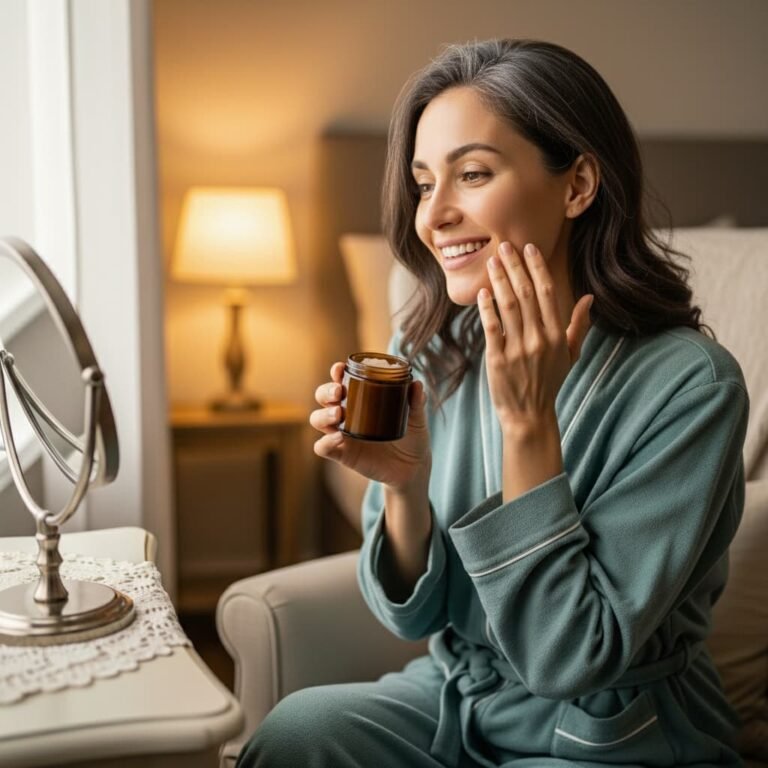
Plant-Based Anti-Glycation Compounds
Natural skincare ingredients derived from plants offer several mechanisms for addressing glycation damage and preventing further A.G.E. formation through topical application. These botanical compounds often provide multiple benefits, including antioxidant protection, anti-inflammatory effects, and direct anti-glycation activity that can complement dietary and lifestyle interventions.
Green tea extracts contain epigallocatechin gallate (EGCG) and other catechins that demonstrate significant anti-glycation activity in research studies. These compounds can inhibit the formation of A.G.E.s whilst providing antioxidant protection that prevents the oxidative acceleration of glycation reactions. Green tea extracts also offer anti-inflammatory benefits that may help reduce the inflammatory cascade triggered by A.G.E. accumulation.
Grape seed extract provides proanthocyanidins that show strong anti-glycation properties whilst supporting collagen synthesis and protection. These compounds can help preserve existing collagen structure whilst potentially interrupting ongoing glycation processes. Grape seed extract also offers potent antioxidant activity that addresses the oxidative stress component of glycation acceleration.
Pomegranate extract contains ellagic acid and other polyphenols that demonstrate anti-glycation activity alongside broad-spectrum antioxidant and anti-inflammatory effects. Research suggests pomegranate compounds may help protect collagen from glycation damage whilst supporting natural repair mechanisms. The extract also provides UV protection benefits that address photo-induced glycation acceleration.
Antioxidant Protection Systems
Comprehensive antioxidant protection becomes crucial for preventing glycation acceleration, as oxidative stress drives the conversion of reversible early glycation products into irreversible A.G.E.s. Natural skincare formulations that provide broad-spectrum antioxidant protection can significantly slow glycation progression whilst addressing other ageing pathways simultaneously.
Vitamin C in stable forms such as magnesium ascorbyl phosphate or sodium ascorbyl phosphate provides potent antioxidant protection whilst supporting collagen synthesis that may help compensate for glycation-related collagen damage. Vitamin C also demonstrates some direct anti-glycation activity, making it particularly valuable for comprehensive glycation protection strategies.
Vitamin E in mixed tocopherol forms offers lipid-soluble antioxidant protection that complements water-soluble antioxidants like vitamin C. This combination provides comprehensive protection against the various types of oxidative stress that can accelerate glycation reactions. Natural vitamin E sources also provide supporting compounds that enhance antioxidant effectiveness.
Plant-derived antioxidant complexes that include multiple compounds working synergistically often provide superior protection compared to isolated antioxidants. Botanical extracts naturally contain diverse antioxidant compounds that work together to provide comprehensive protection against the various pathways leading to glycation acceleration.
Collagen Support and Repair Ingredients
Supporting collagen synthesis and repair becomes crucial for addressing glycation damage, as healthy collagen production can help compensate for glycation-related protein damage whilst providing structural support for ageing skin. Natural ingredients that support collagen health offer valuable benefits for comprehensive anti-glycation skincare approaches.
Peptides derived from natural sources can provide signalling molecules that stimulate collagen production and support cellular repair mechanisms. These bioactive peptides may help maintain collagen turnover rates that allow replacement of damaged proteins with healthy alternatives. Natural peptide sources often provide additional benefits through associated compounds that support skin health.
Amino acids that serve as collagen building blocks become particularly important when glycation damage reduces the availability of functional collagen proteins. Providing these building blocks through topical application may support the synthesis of new collagen that can help maintain skin structure despite ongoing glycation processes.
Botanical extracts that support collagen synthesis through various mechanisms can provide valuable benefits for glycation-affected skin. Ingredients such as horsetail extract (providing silica), rose hip oil (providing vitamin C and essential fatty acids), and sea buckthorn oil (providing vitamins and antioxidants) offer natural support for collagen health and protection.
Comprehensive Anti-Glycation Protocols: Integrating Prevention Strategies
Dietary Integration Approaches
Developing comprehensive anti-glycation protocols requires integrating dietary strategies that address multiple pathways leading to A.G.E. formation whilst supporting overall health and wellness goals. These integrated approaches often provide synergistic benefits that exceed the sum of individual interventions whilst remaining practical for long-term implementation.
Meal timing and composition strategies can significantly impact glycation rates through blood sugar management and metabolic optimisation. Eating balanced meals that include adequate protein, healthy fats, and complex carbohydrates helps maintain stable blood glucose levels throughout the day. Avoiding large meals high in simple carbohydrates prevents glucose spikes that provide ideal conditions for glycation reactions.
Intermittent fasting approaches may provide anti-glycation benefits through improved insulin sensitivity, enhanced cellular repair mechanisms, and reduced overall glucose exposure. Time-restricted eating patterns that allow extended periods without food intake may activate cellular clean-up processes that help remove damaged proteins, including early glycation products.
Hydration strategies that support cellular function and toxin elimination may help optimise the body’s natural mechanisms for removing glycation products and maintaining healthy protein function. Adequate water intake supports circulation, lymphatic drainage, and cellular metabolism that contribute to overall anti-ageing benefits.
Skincare Routine Integration
Integrating anti-glycation skincare strategies into comprehensive routines requires balancing multiple objectives, including glycation prevention, antioxidant protection, collagen support, and general skin health maintenance. These integrated approaches should complement rather than complicate existing skincare practices whilst providing meaningful benefits for glycation prevention.
Morning routines should emphasise antioxidant protection and environmental defence that addresses glycation acceleration factors, including UV radiation and pollution exposure. This might include vitamin C serums, broad-spectrum antioxidant formulations, and protective moisturisers that create barriers against environmental stressors whilst supporting skin function throughout the day.
Evening routines can focus on repair and regeneration support that addresses existing glycation damage whilst supporting natural cellular repair mechanisms. This might include peptide formulations, collagen-supporting ingredients, and gentle exfoliation that promotes cellular turnover and helps remove damaged proteins.
Weekly or periodic intensive treatments can provide concentrated anti-glycation benefits through masks, serums, or other formulations that deliver higher concentrations of active ingredients. These intensive approaches should complement rather than replace daily prevention strategies whilst providing periodic enhancement of anti-glycation benefits.
Lifestyle Synchronisation Strategies
Creating sustainable anti-glycation protocols requires synchronising dietary, lifestyle, and skincare interventions in ways that support long-term adherence whilst maximising synergistic benefits. These integrated approaches should enhance rather than complicate daily routines whilst providing meaningful protection against glycation acceleration.
Exercise timing and nutrition coordination can optimise glucose metabolism and cellular repair mechanisms that support anti-glycation goals. Post-exercise nutrition that supports recovery whilst maintaining stable blood sugar levels can enhance the metabolic benefits of physical activity for glycation prevention.
Stress management integration that addresses both acute and chronic stress factors can significantly impact glycation rates through cortisol regulation and sleep quality improvement. Developing sustainable stress reduction practices that fit individual lifestyles and preferences becomes crucial for long-term glycation prevention success.
Environmental protection strategies that address pollution exposure, UV radiation, and chemical exposures can complement internal anti-glycation approaches whilst providing broader health and wellness benefits. These might include air purification systems, natural personal care products, and protective clothing or accessories that reduce environmental stressor exposure.
Monitoring Progress: Tracking Anti-Glycation Effectiveness
Skin Health Assessment Methods
Monitoring the effectiveness of anti-glycation strategies requires developing assessment methods that can track subtle changes in skin health and appearance over time. These monitoring approaches help optimise intervention strategies whilst motivating long-term adherence to prevention protocols.
Visual documentation through consistent photography under standardised lighting conditions can help track changes in skin texture, tone, and firmness that may indicate glycation prevention effectiveness. Regular photos taken monthly or quarterly provide objective records of skin changes that might be difficult to notice through daily observation.
Skin function assessments that measure hydration levels, elasticity, and barrier function can provide objective data about skin health improvements that may result from anti-glycation interventions. Simple tools for measuring skin moisture, pH levels, and elasticity can provide quantifiable data about skin function changes over time.
Professional skin assessments through dermatologists or aestheticians can provide expert evaluation of skin health changes and recommendations for optimising anti-glycation strategies. These professional assessments can identify subtle changes that might not be apparent through self-evaluation, whilst guiding the adjustment of intervention approaches.
Metabolic Health Tracking
Monitoring metabolic health parameters that influence glycation rates provides valuable feedback about the effectiveness of dietary and lifestyle interventions for glycation prevention. These assessments help optimise prevention strategies whilst providing broader health benefits beyond skin protection.
Blood glucose monitoring through regular testing or continuous glucose monitors can provide detailed information about blood sugar patterns that directly influence glycation rates. Understanding individual glucose responses to different foods, activities, and stressors enables targeted modifications that optimise glycation prevention effectiveness.
Haemoglobin A1c testing provides information about average blood glucose levels over 2-3 month periods, offering a broader perspective on glucose control effectiveness for glycation prevention. This testing can help evaluate the long-term effectiveness of dietary and lifestyle modifications for blood sugar management.
Inflammatory marker assessments through blood testing can provide information about systemic inflammation levels that influence glycation acceleration and skin ageing processes. Tracking markers such as C-reactive protein or interleukin-6 can help evaluate the effectiveness of anti-inflammatory interventions for comprehensive ageing prevention.
Long-Term Outcome Evaluation
Assessing long-term outcomes from anti-glycation interventions requires patience and consistent monitoring approaches that can detect subtle changes occurring over months or years. These long-term assessments provide the most meaningful information about intervention effectiveness whilst guiding adjustments for optimal results.
Annual skin health assessments that compare current status to baseline measurements can provide valuable information about the cumulative effectiveness of anti-glycation strategies. These assessments might include professional evaluations, standardised photography, and objective skin function measurements that track changes over extended periods.
Comparative ageing assessments that evaluate skin health relative to chronological age can provide information about the effectiveness of anti-glycation interventions for preventing premature ageing. These comparisons help evaluate whether prevention strategies are successfully slowing ageing processes beyond normal expectations.
Quality of life assessments that evaluate satisfaction with skin appearance, confidence levels, and overall wellness can provide important information about the broader benefits of anti-glycation interventions. These subjective measures often motivate continued adherence to prevention strategies whilst highlighting benefits that extend beyond measurable skin changes.
Conclusion: Your Anti-Glycation Action Plan
Understanding glycation as a controllable ageing process empowers you to take targeted action that can significantly slow skin ageing whilst supporting overall health and wellness goals. The comprehensive nature of anti-glycation strategies—encompassing diet, lifestyle, skincare, and environmental factors—provides multiple pathways for meaningful intervention that can compound over time to create substantial benefits.
The early implementation of anti-glycation strategies provides the greatest long-term benefits, as preventing A.G.E. formation proves far more effective than attempting to reverse existing glycation damage. However, intervention at any age can provide meaningful benefits through slowing further damage whilst supporting natural repair mechanisms that may help mitigate existing problems.
Your personalised anti-glycation protocol should integrate approaches that fit your lifestyle, preferences, and health status whilst providing sustainable strategies that can be maintained long-term. The most effective interventions are those that become natural parts of daily routines rather than burdensome additions that create stress or compliance challenges.
Begin implementing anti-glycation strategies immediately, starting with dietary modifications that provide the most direct impact on glycation rates, whilst gradually incorporating skincare and lifestyle approaches that complement these foundational changes. Your skin’s future appearance and health depend on the prevention strategies you implement today, making immediate action crucial for optimal long-term outcomes.
Remember that glycation prevention represents just one component of comprehensive skin health and ageing prevention strategies. Integrating anti-glycation approaches with sun protection, antioxidant support, and other evidence-based ageing prevention strategies provides synergistic benefits that exceed individual intervention effectiveness, whilst supporting overall health and wellness throughout the ageing process.
Support Your Skin
Our natural product collection at Ossie Naturals is formulated specifically to support your skin’s natural adaptive processes. Each product provides the building blocks your skin needs, from barrier-supporting lipids to adaptive antioxidants.
We don’t believe in dramatic seasonal routine overhauls or aggressive treatments that fight against your skin’s natural processes. Instead, our approach focuses on gentle, consistent support that works with your skin’s intelligence rather than against it.
Join our private community on Facebook or join our Newsletter for access to seasonal transition guides, ingredient education, and products specifically formulated to support your skin through changes because your skin’s adaptive intelligence deserves support, not interference.
Performance‑led, nutrient‑rich compositions
Our House Collection
Calendula Balm - Original™
Restorative and Calming Concentrate
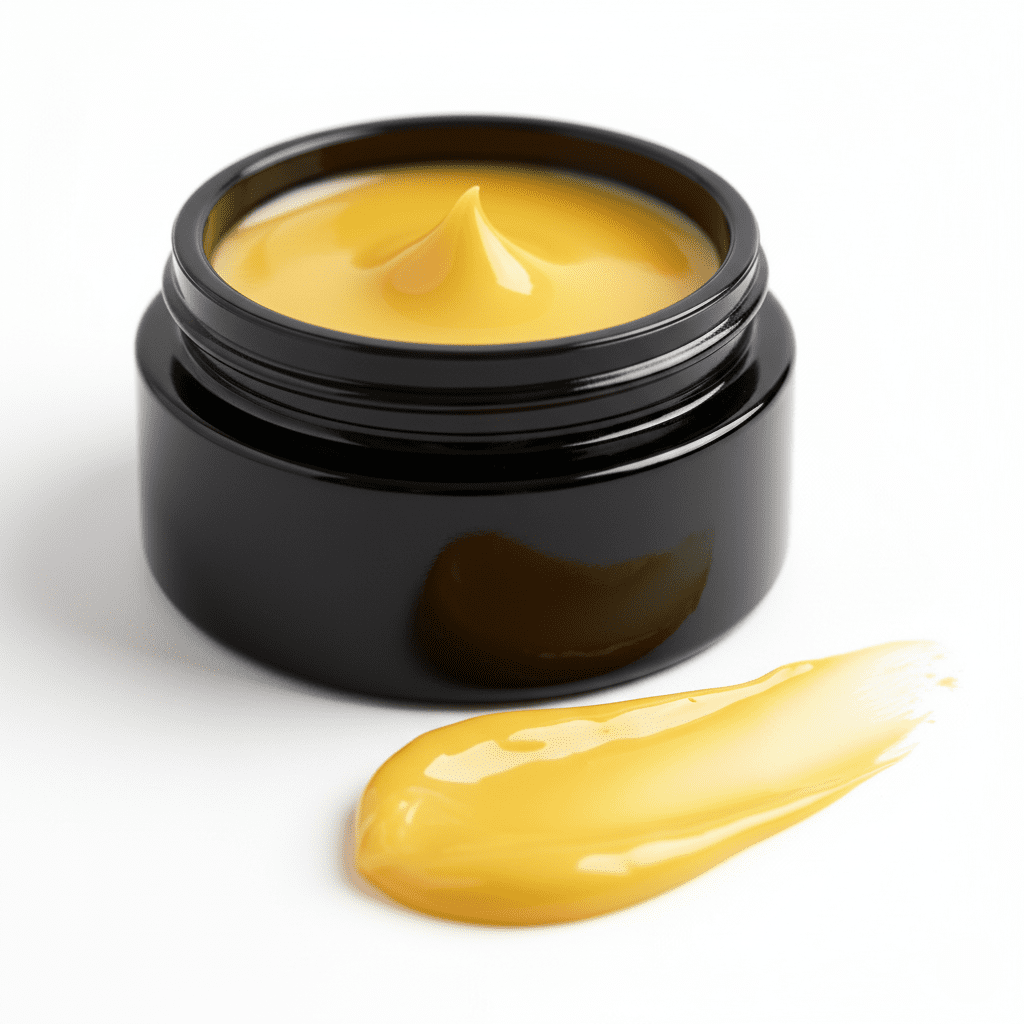
Azure Tansy
Balm™
Intensive Repair and Protection Complex
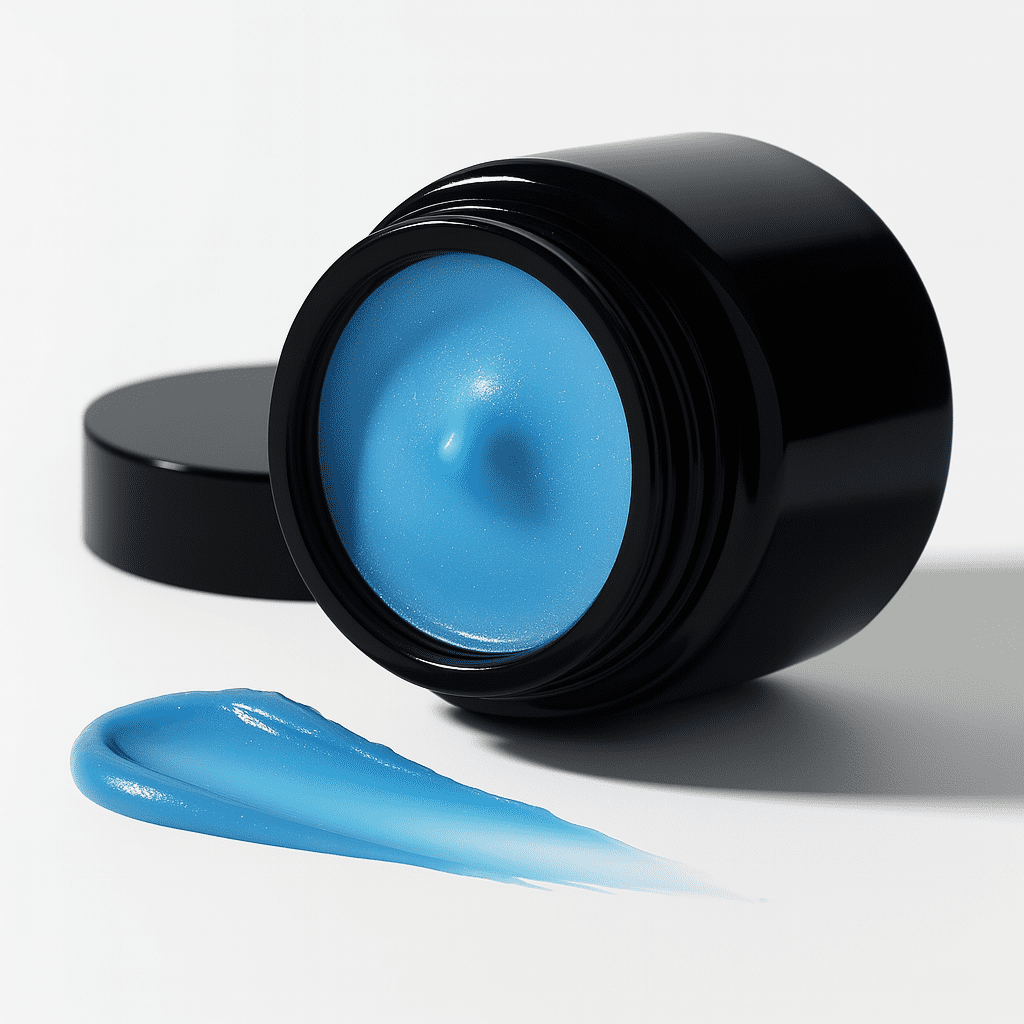
TerraPure - Original Deodorant
Powerful protection, naturally
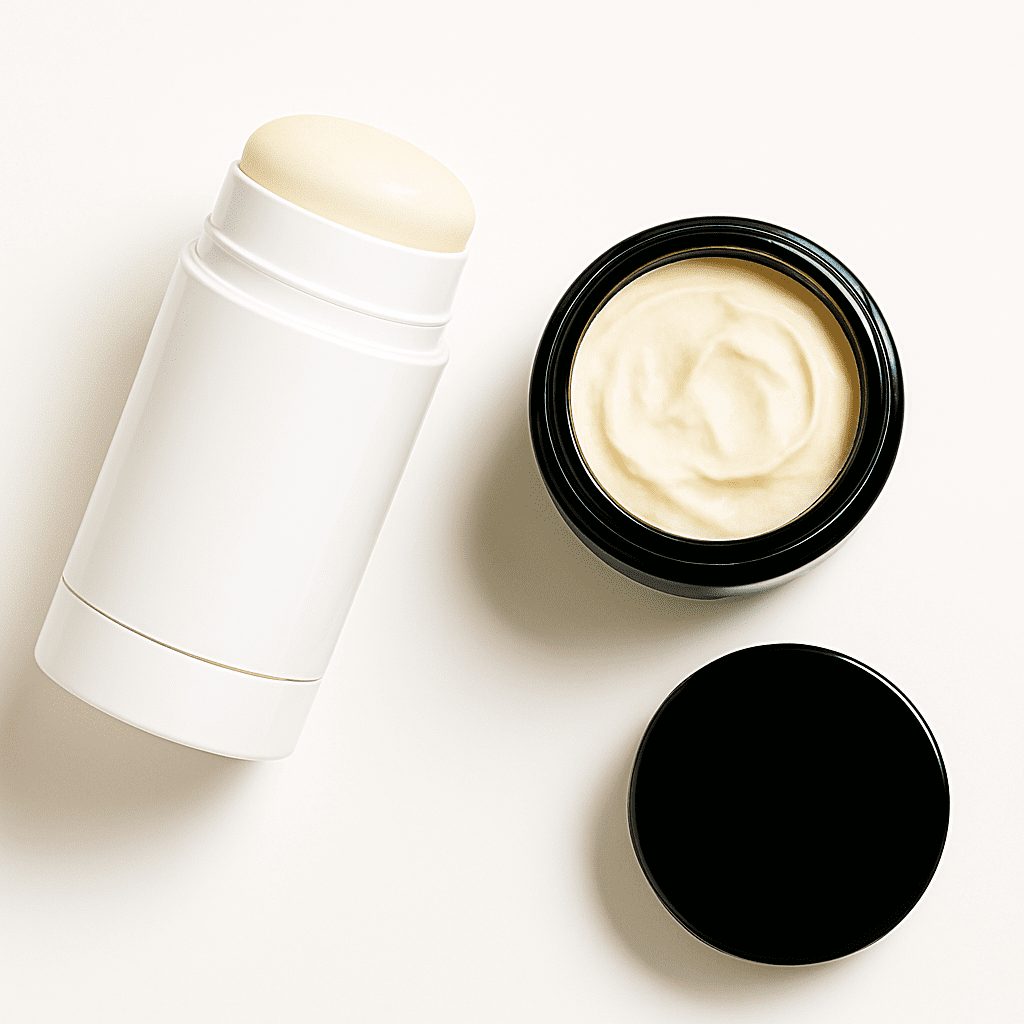
Restorative Phyto‑Serum Oil™
Renewal and Balance. Visible transformation in every drop
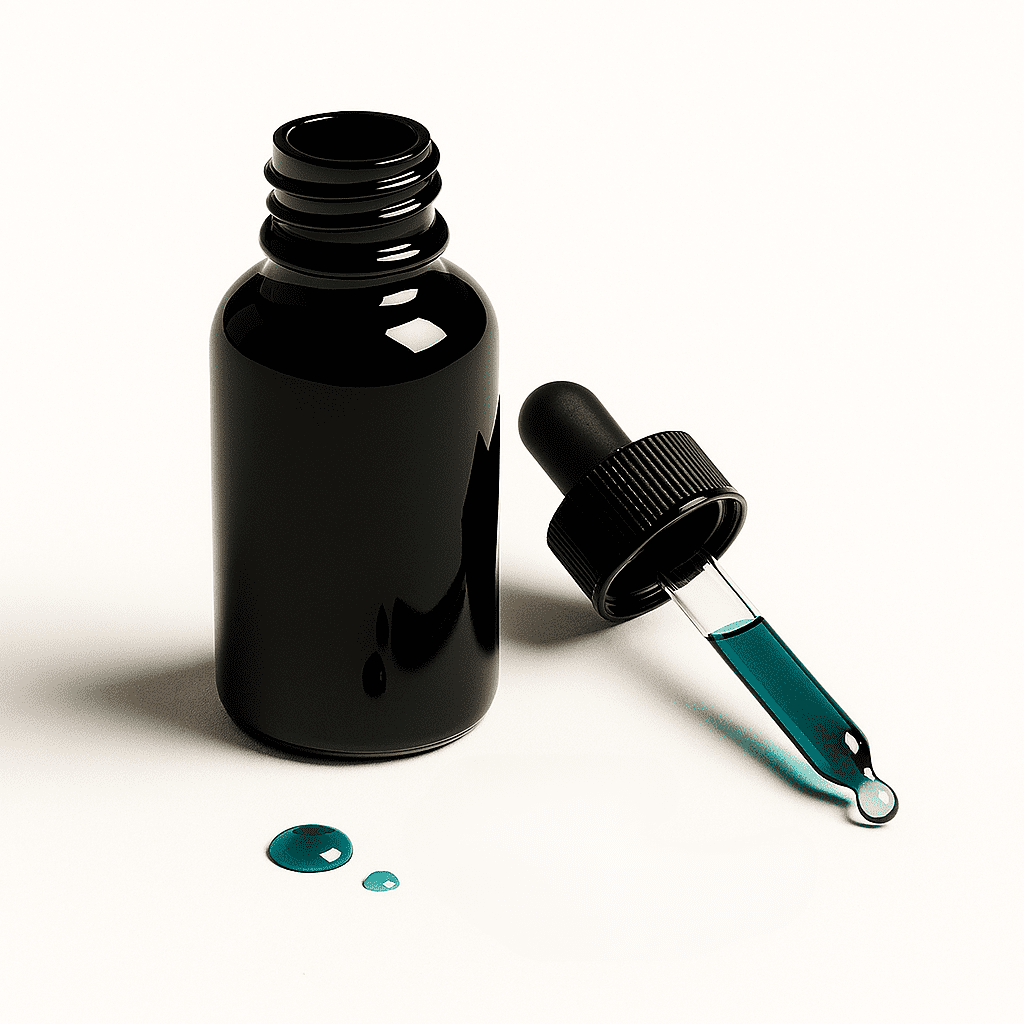
We empower your skin to thrive.
Sign Up Newsletter
Ready to invest in your skin’s future with the finest natural ingredients? Explore our collections or join our community for expert tips and exclusive access.
We value your trust when sharing your personal data with us. We always treat your data in a fair and respectful manner, limited to the purpose mentioned above. If you would like to know more about how we handle your data, please read our Privacy Policy.
